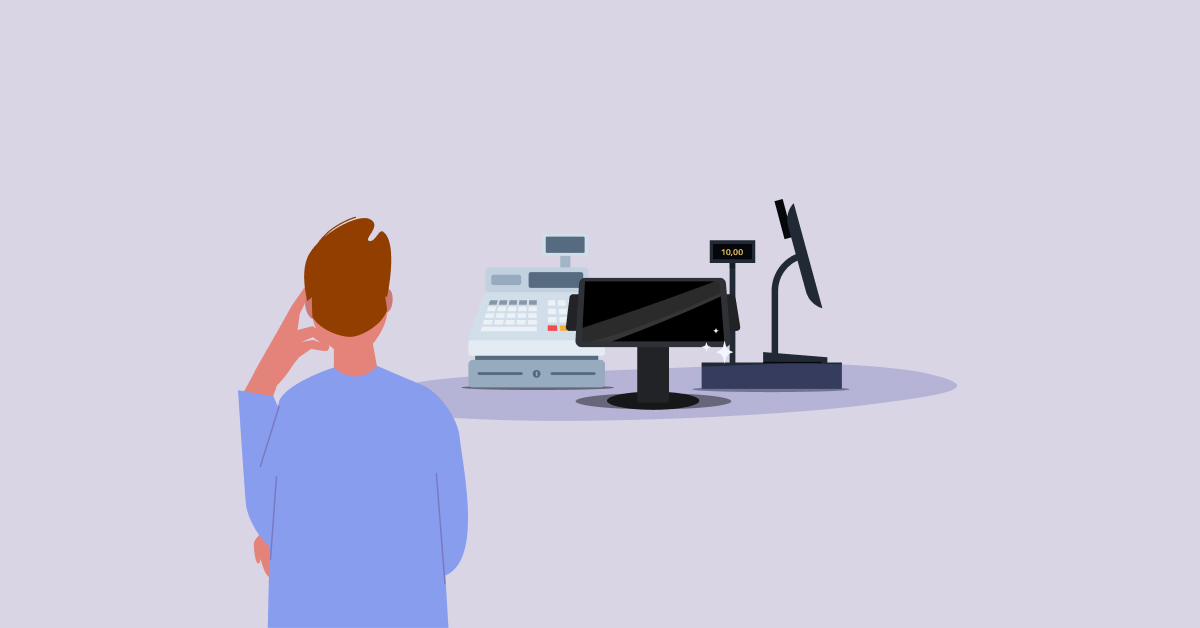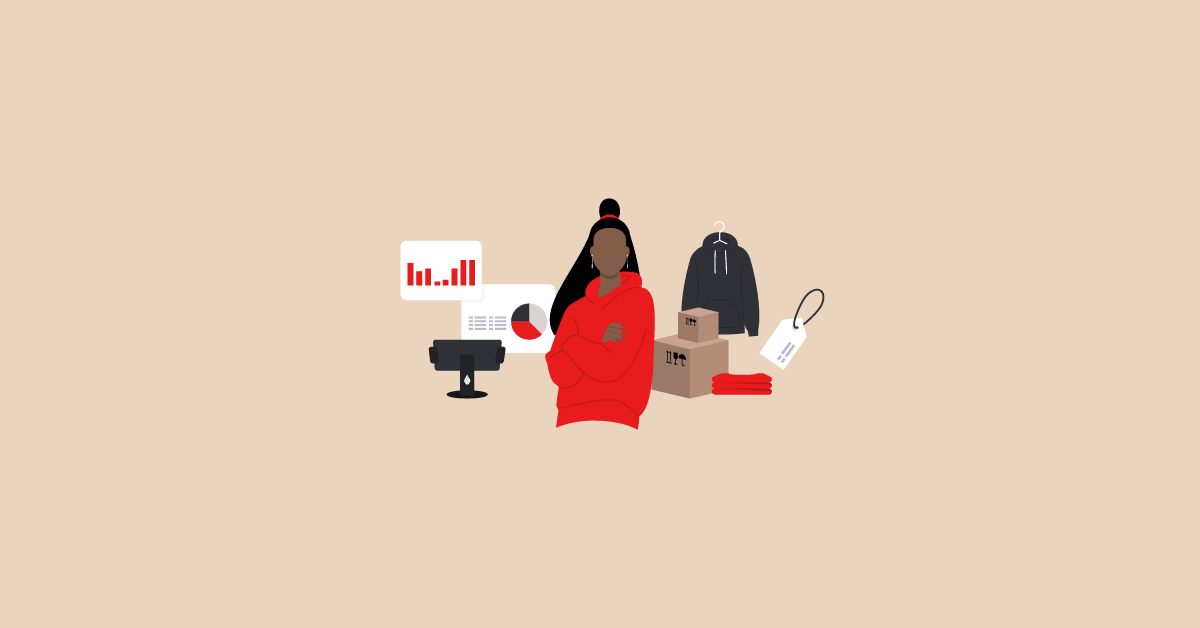
If you run a retail business, restaurant, or golf course, you’ll need to equip it with a point-of-sale system. If you get just one piece of technology for your small business, this better be it. A POS system is critical to your daily operations and can help ensure everything from payment processing to managing inventory runs smoothly.
However, with so many types of POS systems on the market, it can be difficult to figure out which one is best for your business. We’ve created this guide to help you shop around and understand:
In this free guide, you'll learn the 11 questions you need to ask when shopping for your first, or your next, point of sale system.Choose the right point of sale system
What is a point of sale system?
A point of sale system (a.k.a. “POS system”) is a software and hardware combination that serves as the central hub for all transactions at a small business, such as a retail boutique, restaurant, or golf course.
You can think of POS systems as technologically advanced cash registers. Beyond just calculating purchases totals, however, modern point-of-sale systems for retail process transactions, hold information about your inventory, process payments, collect business data, and a lot more.
How to compare POS systems
There are lots of different types of POS systems on the market. So, how do you compare them?
First, you need to know your business’ needs. Before you shop around for a POS system, ask yourself these questions:
- What’s your budget for a POS system?
- What do you need the system to do?
- Do you want a stationary checkout point, or do you want to checkout customers from anywhere on premises?
- How many locations does your business have?
- Do you have a wifi connection or do you rely on ethernet?
- What kind of data do you want to collect about your business?
- What other tools does your business use?
- Does the POS system you’re considering integrate with my existing technology?
Once you’ve answered those questions and thought about your needs, you’ll need to find a POS system that meets that criteria. The guide below will help you understand the capabilities of the most popular types of POS systems.
Types of POS systems
There are four main types of POS systems that small businesses use today: legacy, tablet, mobile, and cloud-based POS systems.
We’re explaining what each one is, its key features, how much you can expect to pay for them, and several examples of each. Note that these systems have a lot of overlap in what they offer.
Legacy POS system
What is it?
A legacy POS system is also known as an on-premises POS or traditional POS. The biggest difference between a legacy system and other types of POS systems is that this system saves data locally. That means that all of your transactions and other information are saved to one device (or other devices on your closed network), and you can only access that data from those devices.
This system runs on hardware that’s typically proprietary and can only be purchased through the POS provider. Legacy point of sale systems for retail require a lot more training than other types of systems, making onboarding a slow and long process. You’ll also need someone to come and install the system, and be present on-site to provide maintenance, when needed.
Key features and benefits
- Scan product barcodes or look up products in the system
- Ring up customers
- Calculate purchase totals, including taxes and discounts
- Process payments
- Provide reporting on key aspects of the business
- Doesn’t require an internet connection
- Offers strong data security
Pricing
According to Fit Small Business, a legacy POS system typically costs between $10,000 and $15,000 for one-time hardware costs, between $1,000 and $5,000 for installation services, and between $100 to $250 per month for support services.
Examples
Aloha, Oracle MICROS, and Squirrel Systems are among the best legacy POS systems for retail.
Tablet-based POS system
What is it?
Unlike a legacy POS system, a tablet-based POS system is considered a “modern POS system” (like the remaining types of POS systems on this list). A tablet-based system is also known as a touchscreen or iPad POS system and gets its name from the hardware on which it runs.
Because this system runs on hardware that many people are familiar with, training and onboarding tend to be easier than with a legacy POS. These systems are convenient due to the sleek size of their hardware.
Most tablet-based retail POS systems run on a cloud-based network system, which means you can make changes to the business from anywhere. For example, you could add new inventory from your couch, after hours.
A tablet-based system usually comes with self set up and self maintenance, which means you can get up and running on your own schedule.
Key features and benefits
- Familiar tablet hardware that’s intuitive to use and easy to train on
- Several options for processing transactions, including scanning a barcode and looking up products
- Calculate purchase totals, including taxes and discounts
- Payment processing for all kinds of payment types
- Collect data about your customers and add shopper notes to each transaction
- Inventory management features like low-stock alerts and built-in inventory counting
- Multiple fulfillment options, like click and collect and ship to customer
- Sophisticated reporting about your sales, staff, customers, and inventory
- Integrations with hundreds of other tech tools
- Social media integrations for seamless marketing
Pricing
With a tablet-based point-of-sale system, you’ll need to pay for the tablet hardware, an ongoing POS software license, and if it’s not included in your license costs, a fee for customer support.
iPads, for example, start at $329. Depending on your provider, POS software can range from $69 to $199 per month.
Examples
The best tablet-based small business POS systems include Lightspeed POS, Square, and Shopify POS.
Mobile POS system
What is it?
A mobile POS system is a portable, modern POS system. The point-of-sale software runs on mobile hardware, like a tablet or smartphone.
A mobile POS system is great for serving customers while they shop. Sales associates can look up products and customer profiles from a handheld POS to check inventory and make personalized recommendations.
With this type of POS system, customers don’t have to stop the shopping experience to complete a purchase. Instead, every employee with a mobile system can checkout customers from anywhere in the store. Mobile POS systems are great for line busting and pop-up selling experiences, like markets.
Like tablet-based POS systems, a mobile system usually also includes self set up and fast onboarding.
Key features and benefits
- Sleek, portable hardware
- Line-busting capabilities
- Every employee can serve as a checkout point
- Comes with a built-in card reader, in many cases
- Calculate purchase totals, including taxes and discounts
- Payment processing for all kinds of payments
- Familiar, easy-to-use hardware
- Can come with a built-in barcode scanner, which makes counting inventory a breeze
- Inventory management features
- Various shopping fulfillment options, like ship to home or click and collect
- Integrations with tools already in your tech stack
- Reporting and analytics capabilities that help inform business decisions
Pricing
Mobile point-of-sale systems have similar POS software costs as tablet-based systems (between $69 and $199 per month). The main difference is hardware costs, which will depend on what kind of device you choose. For example, an iPhone-based mobile POS system starts at $429, while iPads start at $329. Hardware costs are typically lower for Android-based devices.
Examples
Lightspeed POS, Clover, and Square are some of the best mobile small business POS systems.
Cloud-based POS system
What is it?
A cloud-based POS system is one in which data is stored in the cloud, rather than on a local device or network. That means that you can access business data, and make changes, from anywhere.
Most modern POS systems are cloud-based. While data can be accessed from anywhere, this also means this system is more vulnerable to security breaches than a legacy POS system. And because it relies on an internet connection to post data, the system could be down when the internet is down.
Like other modern POS systems, this system usually operates on sleek, portable hardware. It also comes with self-onboarding and training documentation.
Key features and benefits
- Business data is saved on the cloud, which means you can access it from anywhere
- Can make changes to your business from anywhere
- Sleek, familiar hardware
- Calculate purchase totals, including taxes and discounts
- Payment processing for all kinds of payments
- Inventory management features
- Various shopping fulfillment options
- Integrations with tools already in your tech stack
- Sophisticated reporting and analytics features
Pricing
Cloud-based POS systems have costs similar to other modern POS systems. That means you have to pay for hardware, point-of-sale software, and sometimes customer support.
When it comes to hardware costs, you could pay anywhere from $329 and upwards for an iPad. Software costs start at $69 per month. You’ll also have to think about payment processing fees, which point-of-sale system providers pass on to their customers, usually at a rate of 2.6% plus 10 cents per transaction.
Examples
Lightspeed POS, Square, and Clover are examples of the best cloud-based POS systems for retail.
Wrapping up: Types of POS systems
There are four main types of POS systems: legacy, tablet-based, mobile, and cloud-based POS systems. The last three of these types of systems are considered “modern” POS systems and are usually more efficient and affordable than legacy systems.
Learn how a mobile, cloud-based POS system like Lightspeed can help your business grow. Book a demo today.

News you care about. Tips you can use.
Everything your business needs to grow, delivered straight to your inbox.




